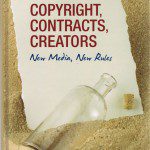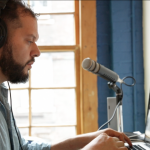The Right to Speak Out
How journalists struggle to live up to professional standards while maintaining a strong stance on controversial issues
With a pistol pressed hard into his ribcage, Aaron Berhane remained silent while one of his attackers, whose face was masked by a long, draping hat, muttered an unsettling threat—if he published one more article criticizing his country’s government, he would not live to have another byline. With that, Berhane’s visitors, who introduced themselves as “concerned citizens,” left the gated property and disappeared into the suburban neighbourhood’s evening shadows.
Shaken up, Berhane entered his house, kissed his wife goodnight and fell fast asleep. Before the week’s end, he published several more articles exposing government corruption, despite the threats.
Berhane co-founded Setit, a publication named after a river that runs through Eritrea, the north eastern African country where it’s based. It was the first independent newspaper in the nation after a law passed in 1996 that allowed a free press to function. But in a country where less than 60 percent of the population is literate, Berhane’s father, a successful businessman, discouraged him from starting his publication. The only other newspaper at the time was owned by the government and had a circulation of just 10,000 in a nation of 3.8 million people. Despite this, Berhane rallied a small team of colleagues whose persistence would help the paper flourish and advocate for democracy. Setit was part of a larger movement by Eritrea’s fledging independent media, which exploded after the press law was passed. By 2000, eight private weekly newspapers were publishing on different days. Within six months of its startup, Setit had a circulation of 15,000 readers and had generated the profit expected after three years. It was an exciting time for the masthead.
Setit was the people’s paper, and as editor-in-chief Berhane was the shepherd to an array of well-crafted stories detailing the government’s weaknesses and demanding its attention. “If you are always in the position of advocacy, you feel a surge of power. People listen to those who speak on behalf of others,” he says.
Berhane also worked long hours on his own articles, which included a critique of rising sugar prices, a village profile that spurred the government to build new water wells, and dozens of other stories that revealed corruption in government departments. And although popularity protected Setit from immediate political interference, its controversial articles began to irritate government officials.
Then came the attacks on the World Trade Center. While the world’s gaze was focused on the United States, the Eritrean government began a nationwide crackdown on independent media, banning Setit and sending police after its writers and editors.
To avoid arrest, Berhane left his family and fled, hiding out for three months in the Eritrean capital of Asmara. He then travelled 400 kilometres east towards the country’s border, where he was forced to run from guards as he crossed into Sudan. To his bewilderment, Berhane survived and came to Canada in August of 2002 after being granted political asylum. Free from the control of the Eritrean government, Berhane continues his advocacy work, publishing Meftih—which means “the key” in Eritrean—a monthly paper dedicated to helping the 20,000-strong Eritrean community living in the Greater Toronto area to integrate into Canadian society. “Back home, the challenge was political pressure, freedom. Here, you have all kinds of freedoms, all kinds of opportunities, but the market is limited,” he says. Berhane has struggled to find enough advertisers to generate much revenue for the publication. “But this is my role in society, to help educate the people… If you are in the position to influence many people by one article you write, you must take that seriously and not let anything stop you, even though many obstacles will try.”
Advocacy journalism is an umbrella term often parsed and shaded into activism journalism, investigative journalism, opinion journalism, and others. But regardless of how it’s classified, the essence of advocacy requires the same thing: that the delegate take a stance on a particular issue and declare a bias, no matter how subtle or brash. Therefore, with an advocacy journalist, there is no traditional sense of balance within his or her stories, no ardent detachment. This clashes with what traditionalists see as the first and highest obligation of journalism: objectivity. Defenders of neutrality such as Bill Kovach and Tom Rosentiel, authors of The Elements of Journalism, argue that journalists must maintain an independence from those they cover. “Being a participant clouds all the other tasks that a journalist must perform,” writes Kovach and Rosenstiel. But is it even possible to report without bias?
“To be objective while being a journalist is like losing your balls,” says Peter C. Newman, a past editor-in-chief of both the Toronto Star and Maclean’s magazine. “Everybody has feelings and opinions, and good journalists express their feelings as well as their thoughts. You have to appeal to people’s emotions as opposed to reciting a long list of facts,” says Newman.
Canada has seen a wide range of mainstream journalists who have abandoned the confines of objectivity and thrived off its absence through hard-hitting works of advocacy. This practice reflects the foundations of journalism. Newspapers in the 18th and 19th centuries were partisan papers, owned and funded by political parties, church groups and unions. It wasn’t until the early 20th century that most papers dropped their explicit view to appeal to wider audiences and provide a seemingly balanced, all-encompassing voice. But even while neutrality was the dominant ethic, advocate writers like June Callwood produced some of the most compelling works of Canadian journalism and became catalysts for community action.
Citizen journalism, the blogosphere and the ubiquitous website comment pages are creating a platform for every opinion, encouraging a greater variety of participants. These forums have accomplished what many advocacy journalists set out to do in traditional media—spark dialogue amongst a widespread community.
Yet in a society where anyone’s opinion can appear to be backed by expertise and investigation, journalists’ opinions may be overwhelmed by all the noise. Unless one’s byline carries as much public acclaim as activist journalist Naomi Klein’s, it can be a struggle to generate enough interest to make the effort worthwhile. Still, many have accepted the challenge, some doubling as public speaker in the process.
It is late September 2010. Students, professors and interested locals have gathered at Ryerson University’s downtown Toronto campus to hear journalist Linda McQuaig and her co-author Neil Brooks talk about their book, The Trouble with Billionaires.
A cluster of students standing in a corner are in heated debate about the inheritance tax the book proposes, when they are hushed to silence. Brooks takes the stage and begins a breakdown of the book. A woman sitting in the front row has filled an entire sheet of paper with doodles before he’s finished speaking. The crowd seems disengaged until a petite, blond woman in a red spaghetti-strap dress and black flats approaches the podium. Her booming voice, which sounds as if it has been roughed up with sandpaper, catches the audience off guard and jolts them to attention. She commands the room with a fierceness that will later generate great debate, calling Conrad Black a “rich, right-wing jerk” and using simple analogies to express how much of Canada’s money the financial elite hold.
A columnist for the Star since 2002, McQuaig grew up in a house of seven, where discussion was encouraged. Dinnertime conversation often escalated to full-fledged political debate, with McQuaig leading the more liberal arguments and her father taking the conservative stance. But it wasn’t until she was 13 and read Simone de Beauvoir’s feminist non-fiction book, The Second Sex, that her politicization began. “Before, I just assumed that society was a manifestation of human nature. That book made me realize society isn’t naturally this way,” McQuaig says. “It’s the people with power who have manipulated it.”
McQuaig’s skepticism became the bedrock of her career. In her early days as a reporter for The Globe and Mail, she produced several front-page stories, all questioning why the rich pay so little tax. One day McQuaig’s managing editor called her into his office, commended her for her work and offered her a promotion in Ottawa.
“I was thrilled because Ottawa’s where you can really get into these stories about federal tax policies,” says McQuaig. But her excitement was short-lived. The promotion was conditional—she could only move to Ottawa if she stopped writing about taxes. McQuaig was shocked.
“My stories were clearly offending either the publisher or the publisher’s friends…The stories were all about variations of how the rich pay too little taxes, a theme somebody at the Globedidn’t want me to be writing about,” she says. “I’m not naive about the way the media’s controlled. You can always push against the barriers but I came smack into them that time.”
McQuaig’s also come under harsh criticism much more blatantly. Progressive Conservative MP Donald Blenkarn called her screaming about a story she wrote that drew attention to the extra revenue the gst would provide to the government. Early on in her career, businessmen booed her at a speaking engagement, and her most recent hate mail included the sender’s wish that McQuaig had ended up in Auschwitz.
While journalists whose bylines become married to a cause expect to receive criticism, either from the people targeted in their stories or from readers with opposing views, it can be challenging for close friends and family to understand the dedication this work requires.
“In the middle of researching, you have a very tight focus and that makes it quite difficult for the people you live with,” says Andrew Nikiforuk, a Calgary writer who has won several awards for his work. “It’s never a comfortable position to be an advocate journalist.”
After a two-year stint as a weekend reporter for The Globe and Mail, Nikiforuk began freelancing for magazines like The Walrus, Maclean’s and Canadian Business, writing about economics, energy and his home, Alberta.
“When you live in a province you love dearly for 20 years and you see everything change dramatically because of the pace and scale of development and because of greed, you want to investigate,” he says. Nikiforuk was preoccupied for four months, conducting research for his most recent book, Tar Sands: Dirty Oil and the Future of a Continent, published in 2008. In his book, Nikiforuk attempts to darken the reputation of the Alberta oil sands—the world’s largest energy project and the United States’ primary source of imported oil. The book describes the impact the tar sands have had on the Canadian landscape, including the destruction of the boreal forest, the depletion of our fresh-water supply, and the poisoning of our air.
In his formative years as a journalist, Nikiforuk was inspired and influenced by farmer and American social critic Wendell Berry, whose analysis of how agricultural communities were being marginalized and industrialized triggered Nikiforuk’s desire to tell the stories of rural people. He wanted to bring their voice forward and become an advocate through journalism for those in smaller communities with little power. Today, concern for his three sons determines the stories he chooses to investigate. “Writing this stuff takes time away from the boys, so it better damn well be important and make a difference in their lives and for their generation.”
Nikiforuk dislikes being on the road and is a self-proclaimed introvert, yet he has spoken about bitumen (the heaviest, thickest form of petroleum) and energy to more than 10,000 Canadians in a two-year span to promote his work and ignite dialogue. “But,” he insists, “I would much rather be chopping wood.”
Even when he is home, practising advocacy journalism isn’t always healthy. Nikiforuk becomes immersed in details, facts, sources and leads. Ideas are always spinning through his mind. Many nights are spent sleepless. “You’re in a heightened state…You’re trying to track something down, you’re single-minded,” says Nikiforuk, who compares the research process to a hunting venture.
Though some see this single-mindedness as an occupational hazard because it can block a sense of perspective. “Journalists who are so tunnel-visioned they only know one point of view and only give one point of view—I don’t call that advocacy,” says Newman, “I call that propaganda.”
Nikiforuk insists he gets excited when he is confronted with the hard, inarguable facts that crash the case he is building. “When your own expectations and stereotypes are challenged,” he says, “that’s when you start to learn something.”
Gordon Laird, another Calgary advocate journalist who writes about energy, economics and the environment, says, “Some of us in the business get so wrapped up in some of the issues that we mistake having fluency for expertise,” which can be a pitfall. For him, becoming an advocacy journalist was an organic process. “Once you get hooked into the idea that the world is fairly dynamic and full of mysteries, then it’s kind of hard to turn away from.”
In 1989, as a young student studying Mandarin in China, Laird spent a lot of time wandering around, wide-eyed and curious. He spoke with several Chinese students at the Tiananmen Square protests. Their democratic ideals made him reflect on Canadian democracy, and he recognized the potential of exploring his curiosity in a free country like Canada. Laird supposes this is what encouraged his eventual career in journalism.
In 1991, he began interning at This Magazine in Toronto, and later became the publication’s business manager and publisher. After three years, he quit and started freelancing for the magazine, whose editors encouraged him to explore ideas that mattered to him. “My stories might not be the loudest, flashiest things you’ve ever read about, but that’s sometimes where the greatest process and change comes from,” says Laird, whose most recent book, The Price of a Bargain, examines current consumer trends such as bargain shopping and its contributions to the international economic crisis.
But getting the public interested in stories that aren’t flashy or dramatic can be the biggest challenge advocacy journalists face. “The Naomi Kleins—people who are saying that the sky is falling—they all sell much better than I do. People find it more engaging to think there’s an apocalypse coming,” says Donna Laframboise.
After leaving journalism for almost a decade, Laframboise recently resurfaced in the blogosphere, documenting her research for a book she plans to publish in 2011, titled Decoding the Climate Bible. The book attacks the Intergovernmental Panel on Climate Change (IPCC), a United Nations body that issues periodic reports on climate research. According to Laframboise, governments around the world spend billions based on the ipcc’s findings. One of Conrad Black’s early recruits for the National Post, she claims that in her entire journalism career she has never come across a story with such scandal. “Underneath every rock I turn over there’s a scandal. Nothing is true, nothing is what people have been saying. And the astonishing thing is [the IPCC is] 22 years old, yet no other journalist thought to question it.”
According to Laframboise, the ipcc’s claims that its reports are 100-percent based on peer reviews and scientific literature are untrue. With the help of various experts such as geologists, political scientists and malaria specialists, Laframboise is using her book to debunk the ipcc’s supposedly well-informed research process.
While her writing is often considered to be right-wing—she attacked aspects of the feminist movement in her first book, The Princess at the Window: A New Gender Morality, and accused feminist authors like Marilyn French of perpetuating sexism against males—Laframboise calls herself an intellectual free-spirit. Her stance is dependent on the issue rather than her political position. She argues that society would do well to abandon the notion of right-wing and left-wing because it distracts people from the problems and encourages readers to take sides without thoroughly investigating. According to Laframboise, if people consider themselves liberal, they will tend to side with those who advocate liberal beliefs, without understanding or questioning what those advocates are saying.
“People don’t want to undermine a cause they support by talking about its problems,” she says. “In Canada, the media landscape is very small, it’s very narrow-minded. I don’t expect many people to review my book, never mind review it in a fair manner. So there are all of these obstacles, and I have no illusions that they aren’t there.”
Nikiforuk agrees. “You can’t take yourself too seriously. You try to make a difference; sometimes you do and sometimes you don’t,” he says. “But if you don’t make a difference; in at least some small way, then you haven’t tried hard enough.”
But if advocacy journalists are tilting at windmills, they don’t seem to mind. “I don’t expect to be popular,” says Laframboise, “but I believe in a democracy, and at the heart of democracy is asking questions and being skeptical.” And while it may be harder for advocacy journalists to stand out today, amidst a sea of talented bloggers and seemingly informed citizens, their work is essential to Canadian democracy. These are the journalists who produce well-researched stories that alarm the public without being alarmist—at least, when the public pays attention.
“I’m just one voice. I won’t ever change a zillion people’s minds,” says Laframboise, “I’ll be one voice out there among many doing our bit.”
This is a joint byline for the Ryerson Review of Journalism. All content is produced by students in their final year of the graduate or undergraduate program at the Ryerson School of Journalism.












































